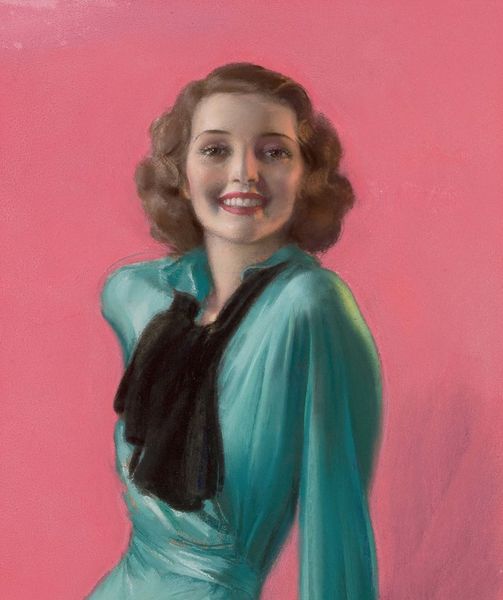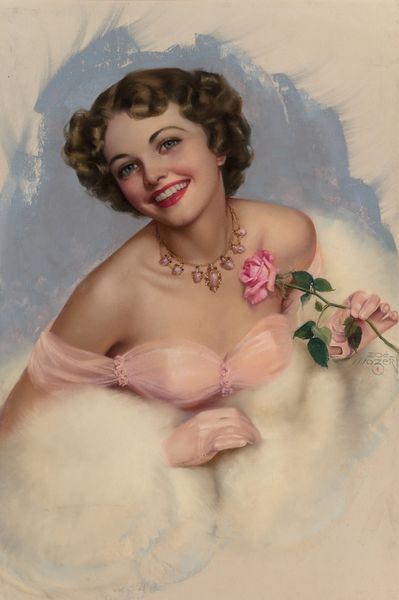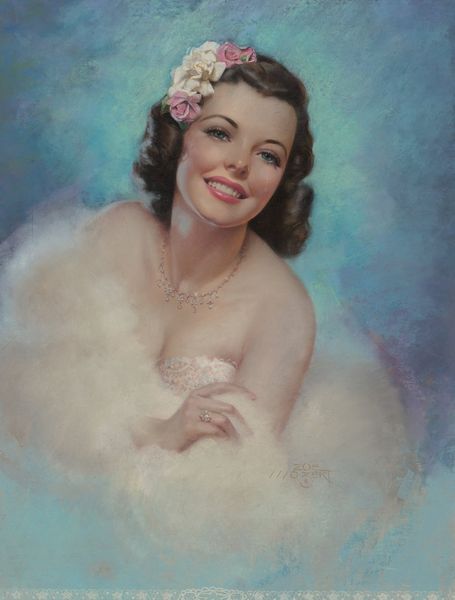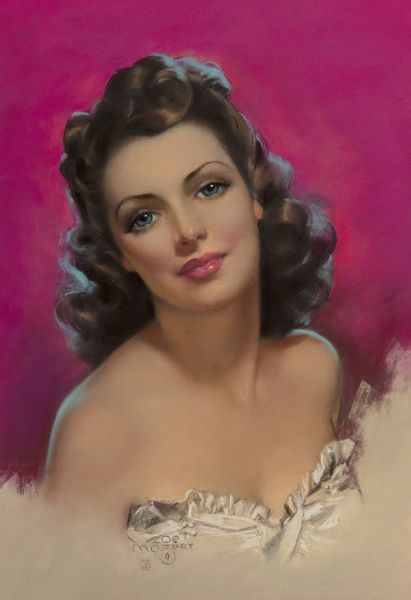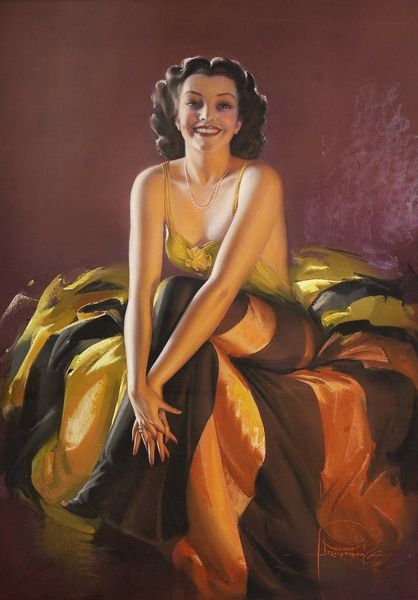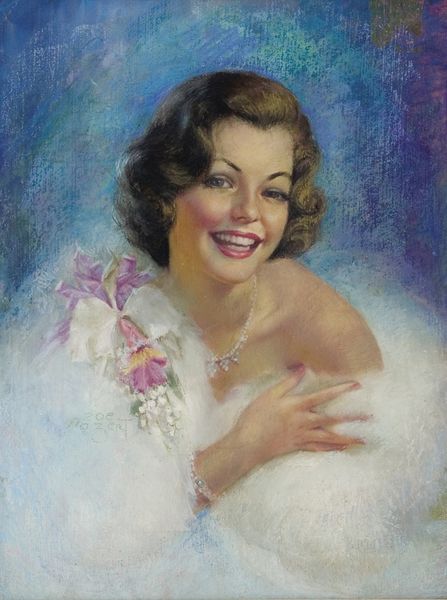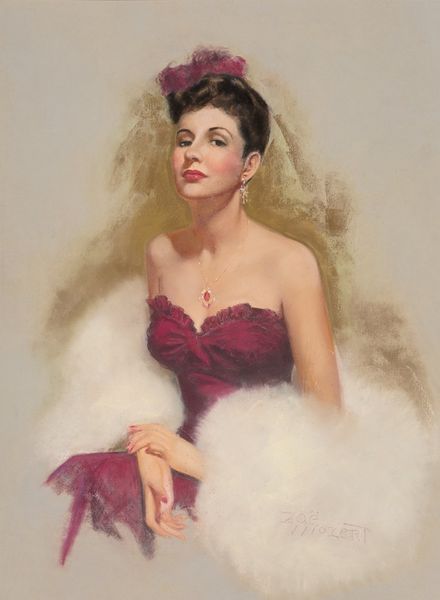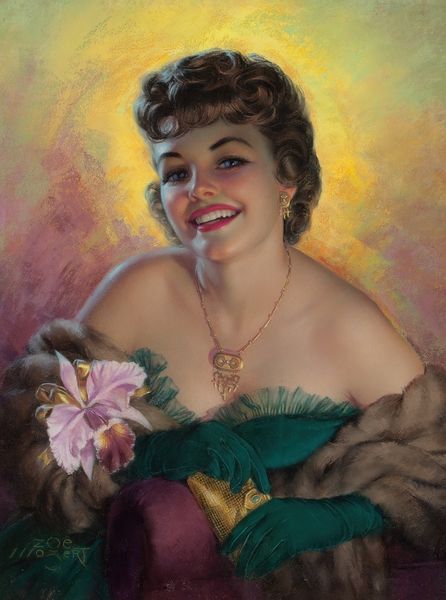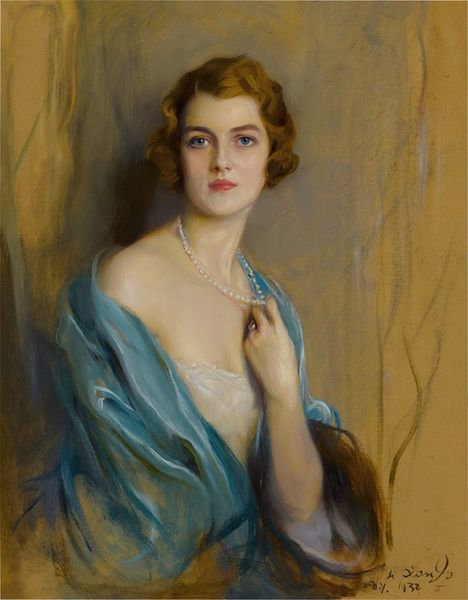
painting, oil-paint
#
portrait
#
painting
#
oil-paint
#
figuration
#
academic-art
Copyright: Modern Artists: Artvee
Editor: We're looking at "Portrait of Mamie June Rose Carnegie" by Rolf Armstrong, an oil painting. There's a real softness to it, and I’m struck by how the composition draws your eye directly to her smiling face. What's your read of the work? Curator: Observe how Armstrong deploys a muted palette of creams, browns, and rose tones. The composition, while seemingly simple, subtly emphasizes a sophisticated interplay between light and shadow. Consider how the artist manipulates the oil paint; note the soft focus effect that deliberately blurs the background, which intensifies the detail in the face, shoulders and arms. Editor: So it’s less about a direct representation and more about a construction using these formal elements? Curator: Precisely. Reflect on the shapes: the rounded curves of her hairstyle echoed by the fur stole. These shapes create a harmonious and visually pleasing pattern. Consider how line is used, not for precise delineation, but as a suggestion of form, notice the face or fingers, it softens and nearly dissolves edges. Armstrong guides the viewer to engage not with reality, but with his arrangement of lines and masses. Editor: That’s interesting, I was seeing the softness as a mood, but it seems it's intrinsic to the structural devices Armstrong employed. Curator: Indeed. And where do you see that application working for the portrait’s overall form? Editor: The fur draped around the subject. It looked more like a halo at first. Now I can see the form echoed elsewhere as you said, in the curves. Thank you, I wouldn't have noticed so much without focusing on these details first.
Comments
No comments
Be the first to comment and join the conversation on the ultimate creative platform.
